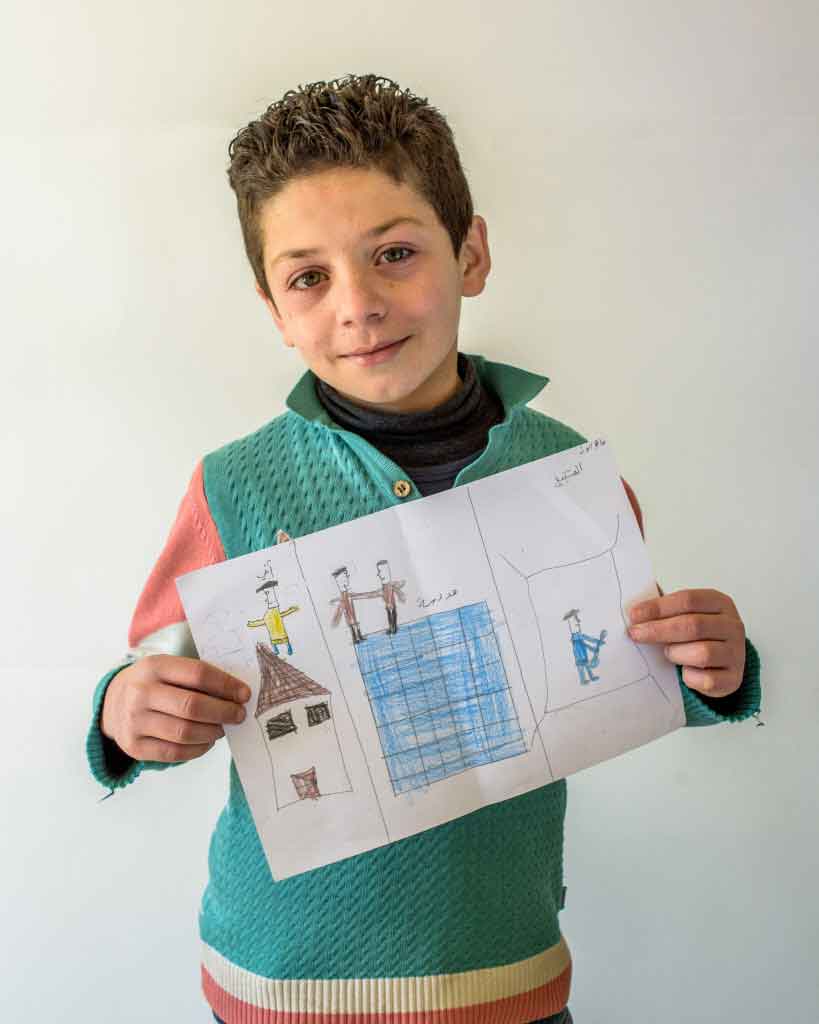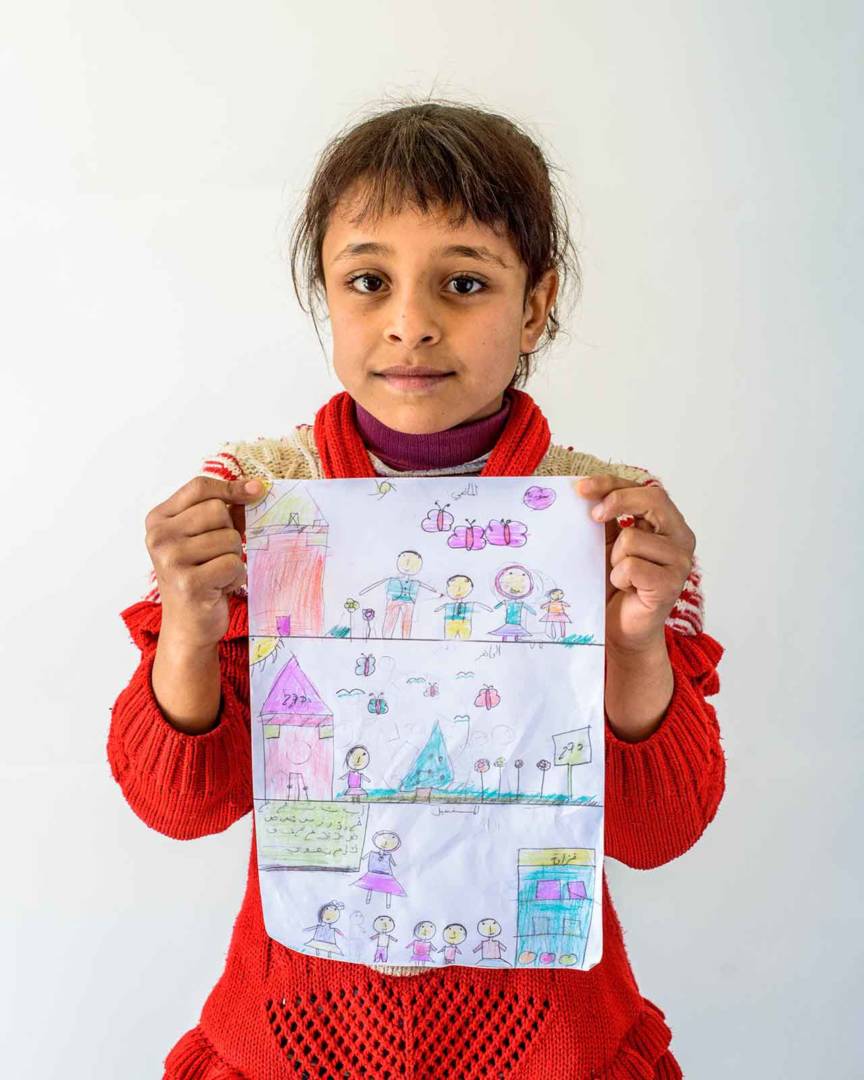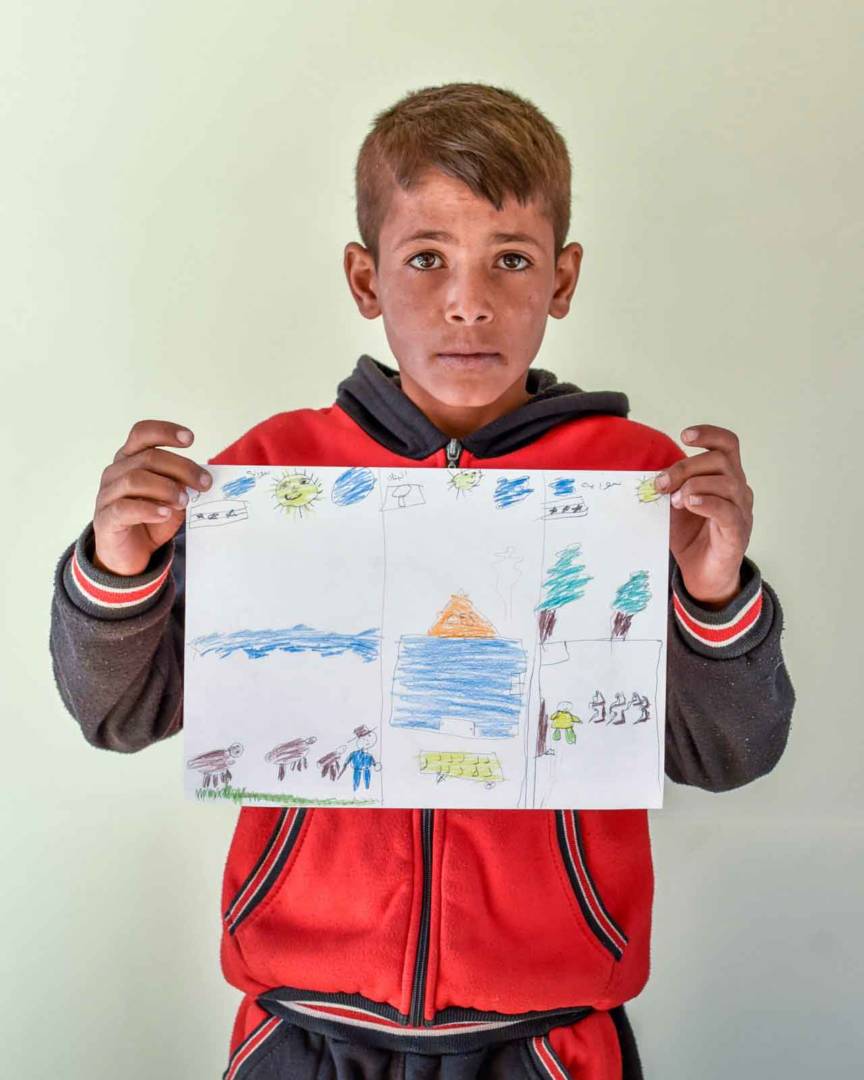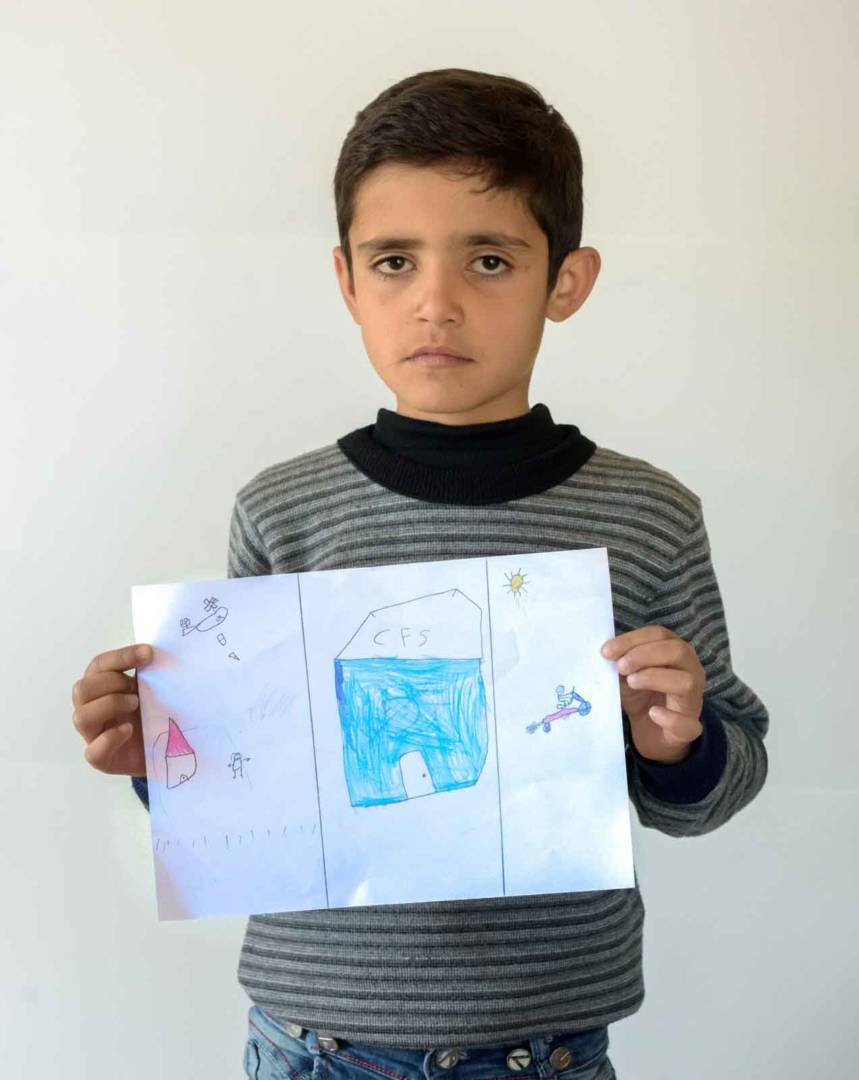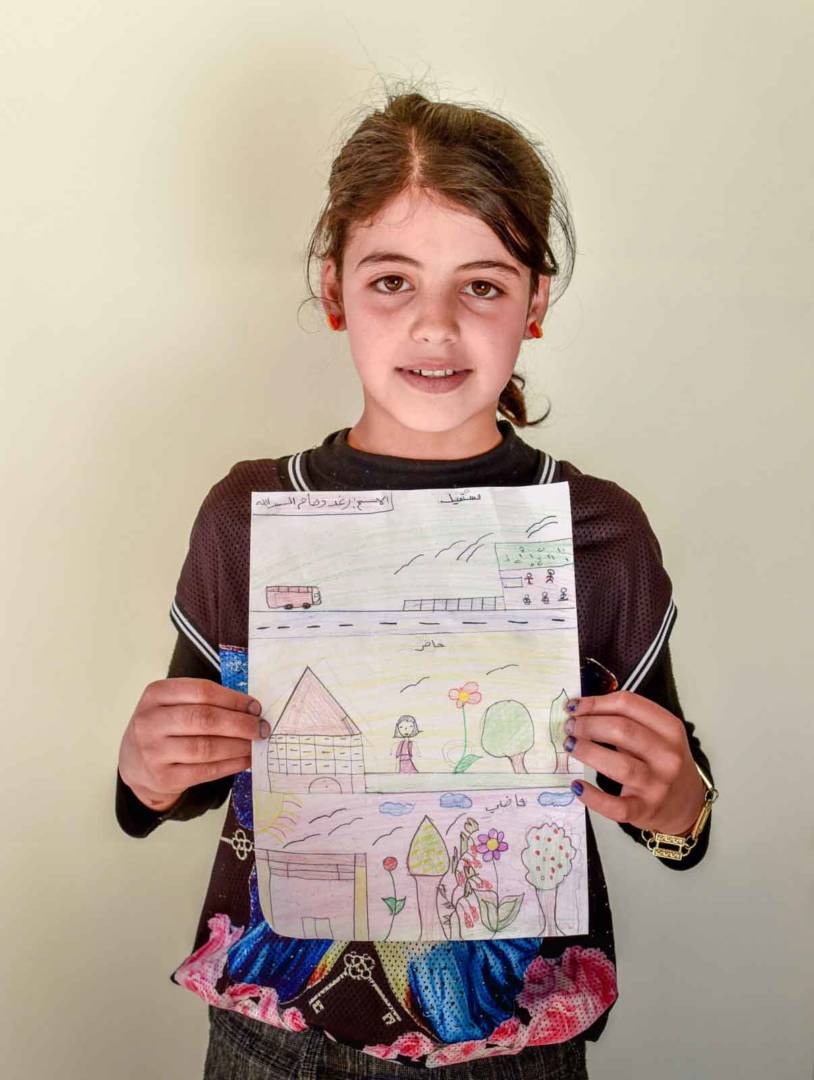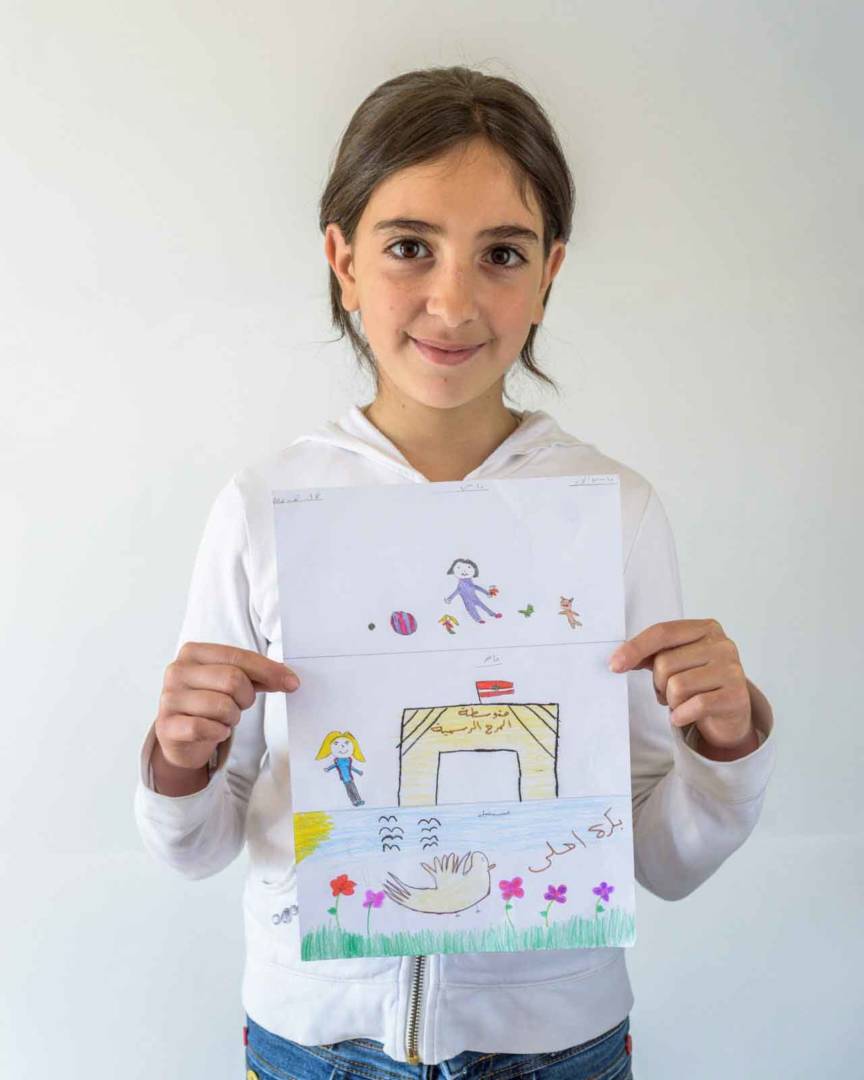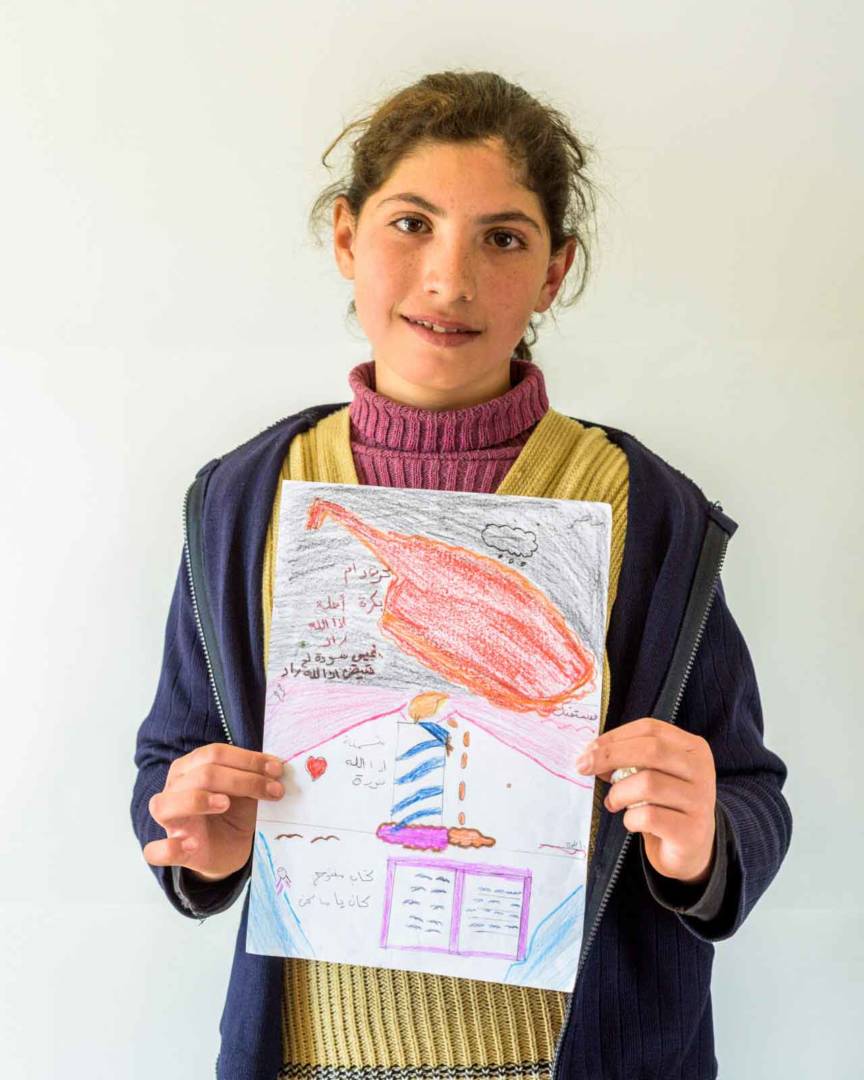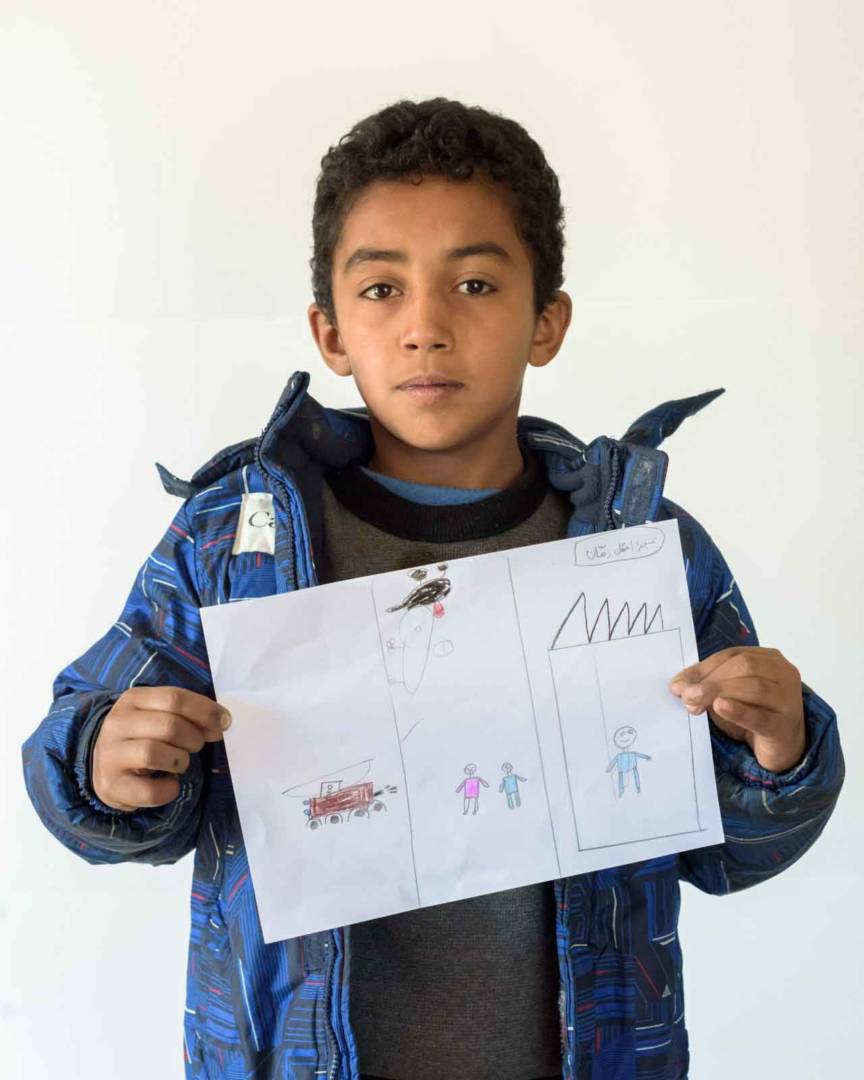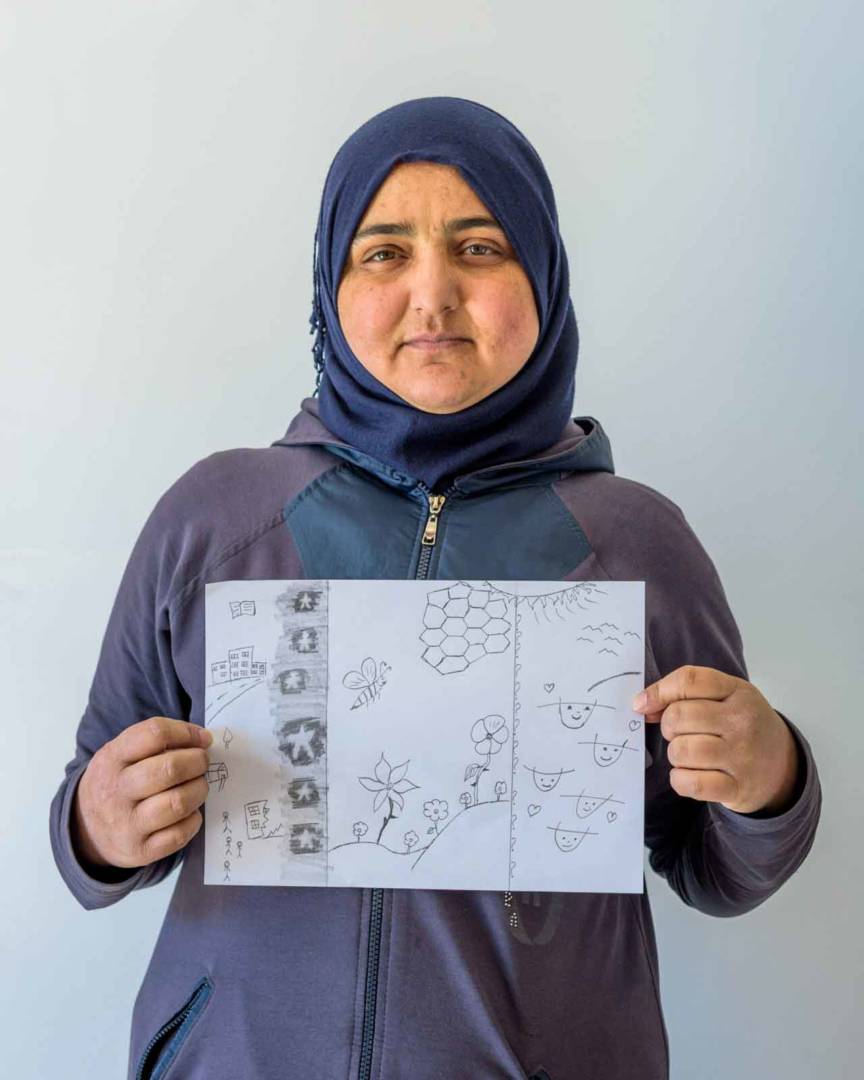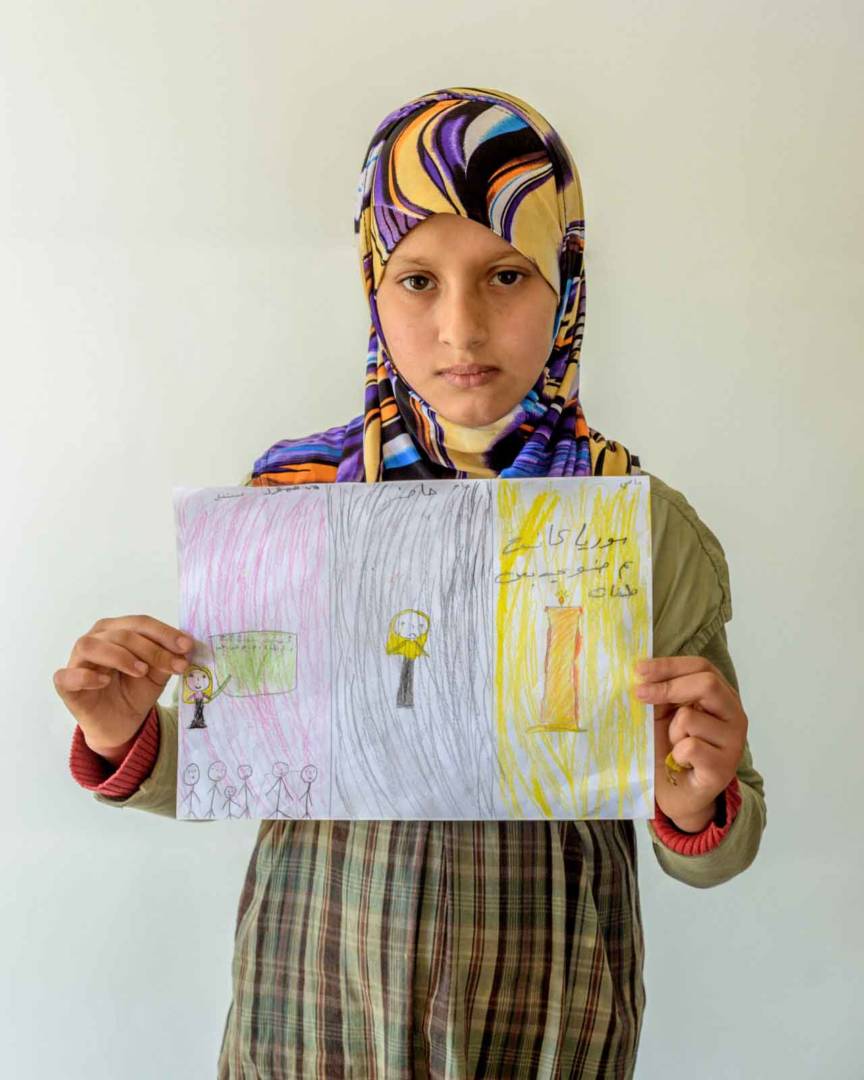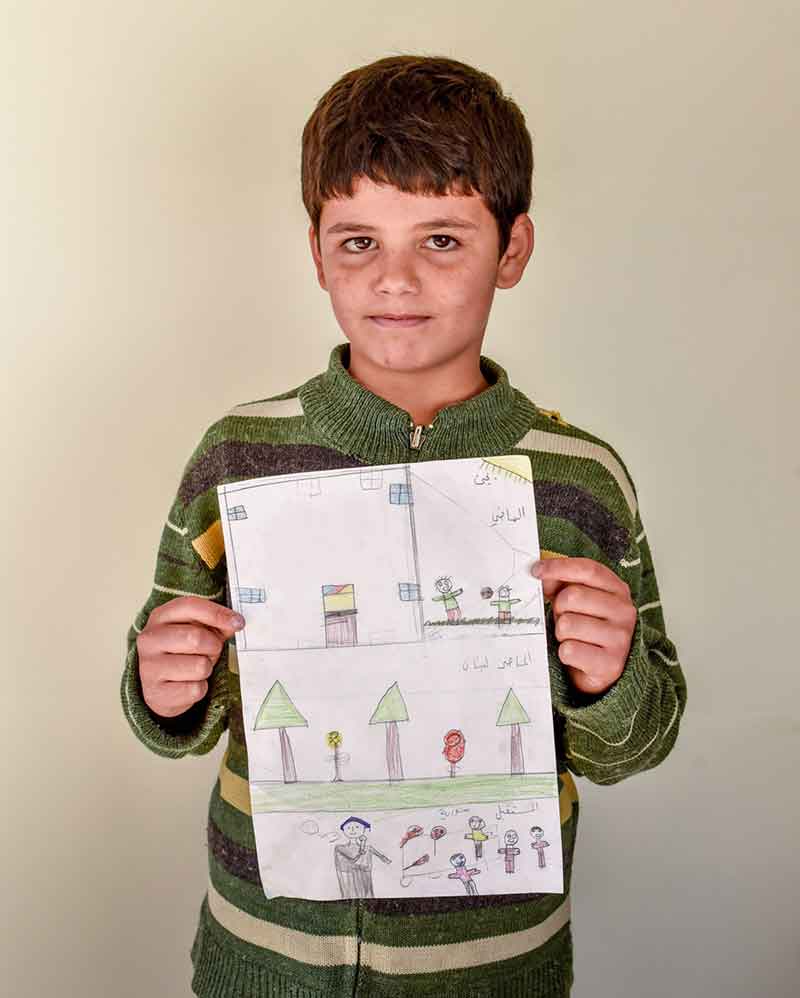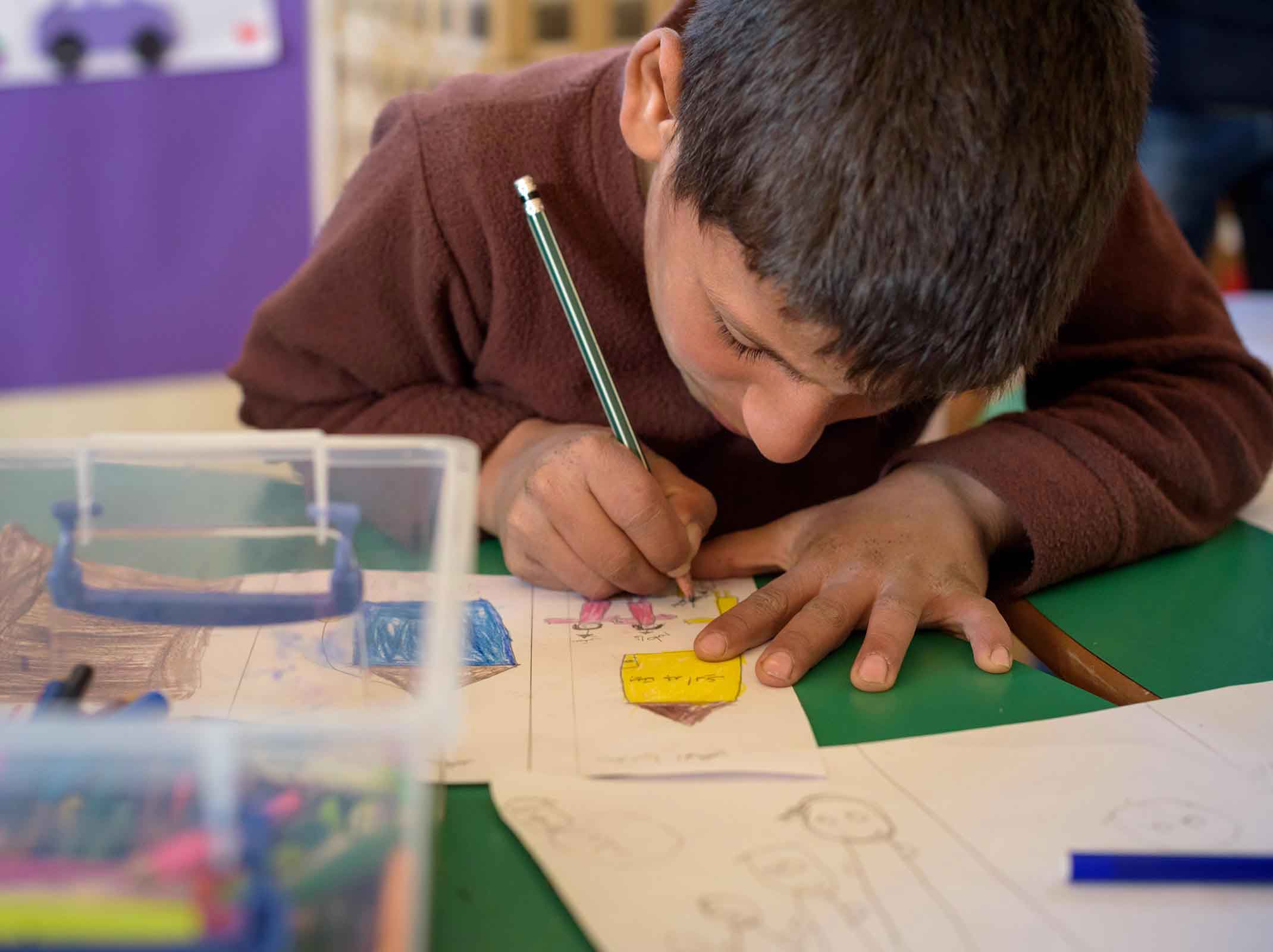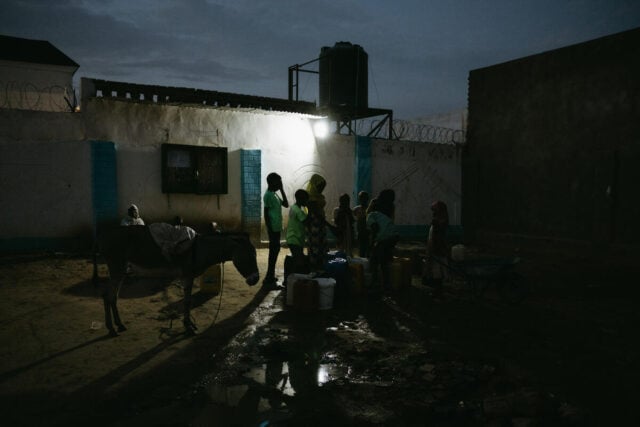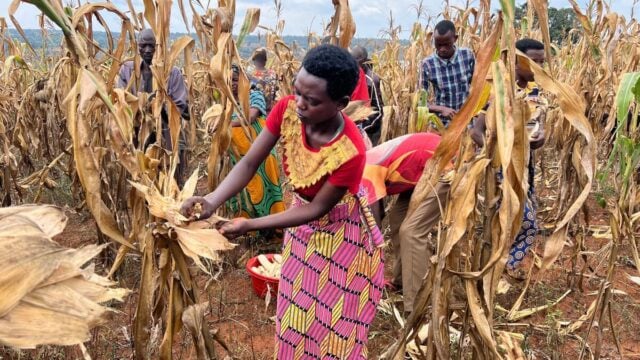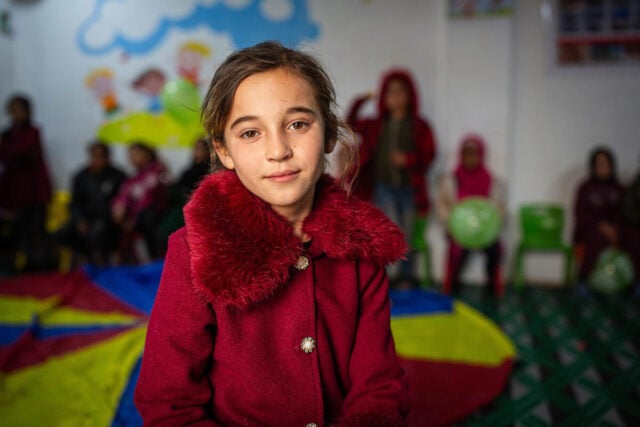When Faras, 11, draws a picture of his past in Syria, he sketches an idyllic landscape with a smiling sun, a rushing river, and a green field where he and his brother once cared for sheep. Habib, 9, instead uses a black crayon to outline a helicopter dropping bombs.
Given the opportunity to draw their past, present, and future, young Syrian refugee children in a Child-Friendly Space in the Bekaa Valley of Lebanon express a wide range of feelings.
That’s entirely appropriate, says Bassima, the center supervisor, who is also a Syrian refugee: “We have a past that is both beautiful and ugly.”
Animators, the adults who lead activities for different age groups of refugee children, don’t ask them about their painful experiences and losses, she says.
“We provide a peaceful place for them to feel their freedom. It’s a safe place for them to experience feelings and memories,” Bassima says.
Syrian refugee children look at past, present, and future
Ahmad, a classroom animator for a group of 10- to 12-year-olds, stands in a circle of 12 boys and girls who mimic his motions as he pantomimes raising an umbrella. The Child-Friendly Space provides an “umbrella of comfort and safety over your head,” he tells them.
Then the children and their animators draw, talk, and share pencils, crayons, and ideas — their observations of past, present, and future.
For the present, says Huda, another animator, “Every day there is something sad [the children hear] about relatives in Syria. They need support not to be overwhelmed by sadness.”
And the future?
“The future is very important to us, the future for these children,” says Huda. “If we create this peaceful place for children, we’ve done what we can do.”
Read more below about what the Syrian refugee children created in their artwork.
Mahar’s drawing is all about Syria. He drew his family home there and his brother standing beside it with arms open wide. “Mister, I had everything!” he told the translator. In the center panel, Mahar plays with his friend Shadi in Syria. In the future, he wants to return there as an expert in karate. (©2016 World Vision/photo by Jon Warren)
“That’s my mother, father, and brother by our beautiful house in Syria. The day is sunny, and there are butterflies,” says Yasmin, 9. In the middle panel, she attends the Child-Friendly Space in Lebanon. “In the future, I want to be a teacher in Syria. That’s a cabinet with books in the classroom. I’ll give gifts to all the students,” she says. (©2016 World Vision/photo by Jon Warren)
Faras, 11, remembers herding sheep in Syria with his brother. Now the happiest thing in his life is coming to the Child-Friendly Space so he draws the bus he rides. “In the future I want to go back to Syria and be a student. I’m not in school here,” he says. (©2016 World Vision/photo by Jon Warren)
Habib, 9, recalls a helicopter dropping bombs near his home. He draws himself with a sad face near his house. “The house is okay. The bombs exploded the neighbors’ house. I saw it; many were killed,” he says, including members of his family. The Child-Friendly Space he attends is the subject of the middle panel. “Sometimes he doesn’t want to draw, but he feels rest here,” says the adult facilitator, Huda. His future picture shows him on a motorcycle on a sunny day. (©2016 World Vision/photo by Jon Warren)
Flowers, trees, sunshine, birds, and her house in Syria are Raghad’s picture of the past (bottom panel). In the middle is her family’s tent in Lebanon. “There are not really trees and flowers there, but I love them so I put some in,” says the 11-year-old. In the future, she wants to teach English in Syria. “The children ride the bus to school, and the walls of the school protect them.” (©2016 World Vision/photo by Jon Warren)
Mayass, 11, pictures herself playing with her toys in Syria when she was younger. “What happened? It was all destroyed. There’s nothing here,” she says. In the middle panel, she shows the school she now attends. “In the future, I would like to be a bird and live in freedom,” says Mayass. (©2016 World Vision/photo by Jon Warren)
At the bottom of her picture, Marah, 12, drew water and a book open to a story. “‘Once upon a time …’ that’s my past story in Syria.” It’s represented by a dripping candle and a heart. The present she represents by a “sea of blood and a dark cloud.” In the future, she hopes the dark will fade. “I hope the future will light up the world,” says Marah. (©2016 World Vision/photo by Jon Warren)
Abdul, 10, drew the car his father drove in Syria. “We were happy in our house in Syria. My father went to work by car. He was a builder man,” says Abdul. In the center panel “there’s a plane, rockets fall, and there are two sad people,” he says. In the future, he’s safe at home in Syria. “I love Syria more. I don’t want to draw Lebanon,” he says. (©2016 World Vision/photo by Jon Warren)
“It starts out that all is well. Small houses, a school, children. I remember the sounds of children on the playground, their smiles. Then the school is broken,” says Huda, 50, a facilitator in the Child-Friendly Space.
“The stars are people in my past who have died,” says Huda. “So many people lost. Now they are … shining in my memory.” In the present, “I am a bee. … I must work hard for my hive … my family, the children, my people.” For the future: “I’m looking for peace, for freedom. I drew [the people] that way to show they are open-minded. To be among them will make me happy.” (©2016 World Vision/photo by Jon Warren)
Mona, 12, says the bright light of Syria went out suddenly, like a candle (right panel). “I am in the center crying, because there were bombs and people died. In the future (left panel) I want to be an Arabic teacher and to be happy.” (©2016 World Vision/photo by Jon Warren)
In his picture from the past, Yahia, 11, plays ball with friends by his house in Syria. There’s beauty in Lebanon — trees and flowers — but no people in his drawing from the present. “I love Lebanon, but I love Syria more,” he says. In the future, Yahia, a famous singer, holds a microphone and sings while others dance. (©2016 World Vision/photo by Jon Warren)
